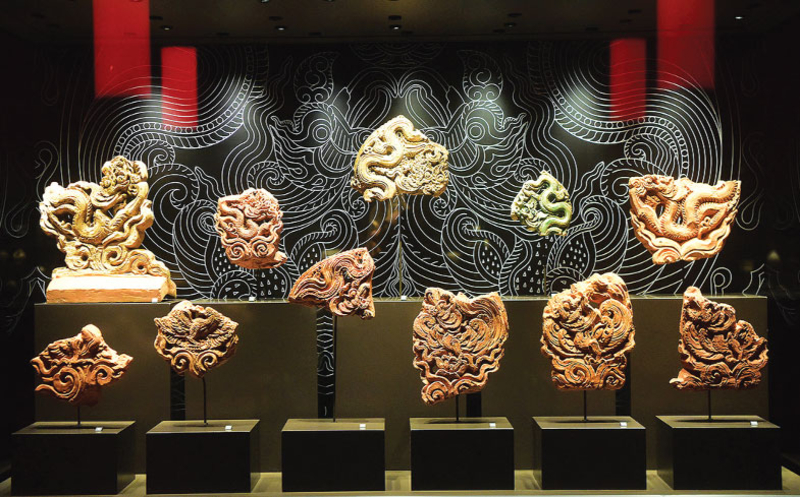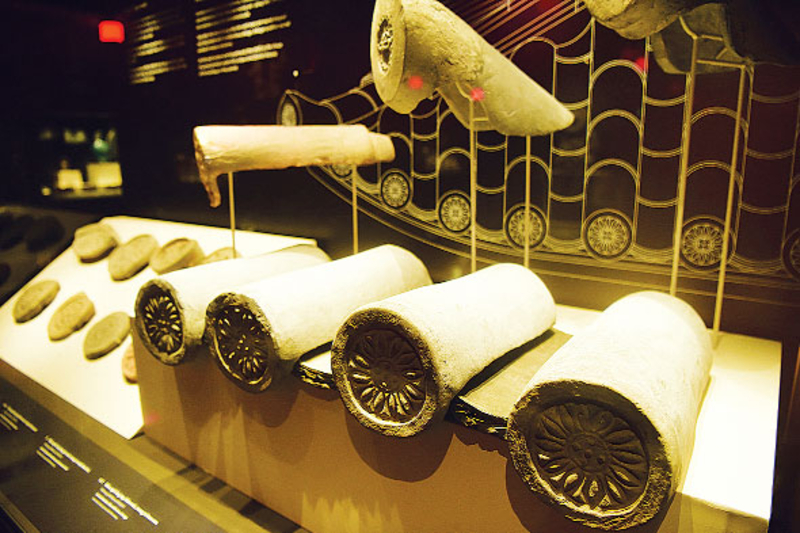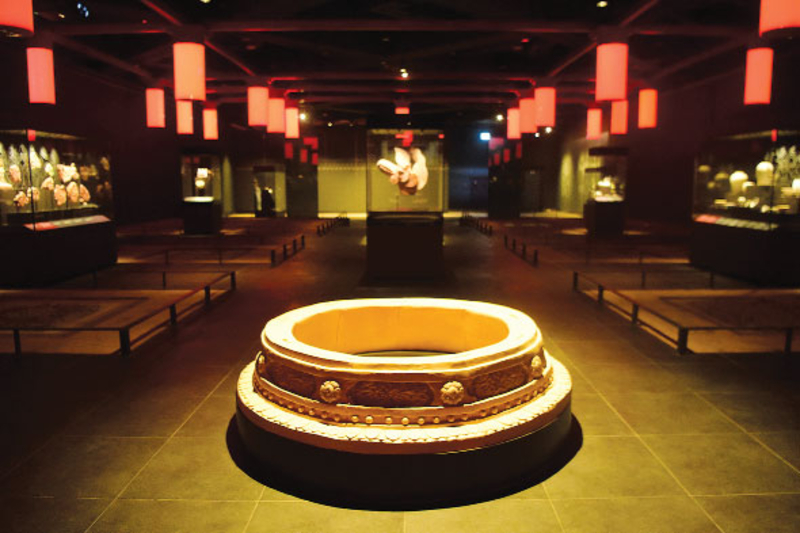In order to create a harmony between tradition and modernity, a part of the space underground the National Assembly has been reserved for the display of archaeological discoveries. This project has just been handed over to Hanoi, revealing interesting things about the thousand-year past and the history of the dynasties.
The secret underground National Assembly’s House
Through ups and downs in history, most of the royal marks of the imperial capital of Thang Long such as palaces, citadel, towers no longer exist on the ground, but are hidden in the subsurface.
In 2008-09, at the construction site of the National Assembly’s House, archaeologists excavated and found multiple relics of many periods, corroborating that this area used to be an important part of Thang Long Imperial Citadel (former name of Hanoi). Archaeological artifacts revealed the huge dimension of the ancient citadel as well as the outstanding engineering achievements of the dynasties in urban planning and construction.
In 2010, the Prime Minister assigned the Vietnam Academy of Social Sciences to study the artifacts and implement a project to display them in the basement of the National Assembly’s House.
The underground display area at the National Assembly’s House is arranged chronologically according to the period of time and categories of relics and objects. Among them, the relic plays most important position within exhibition area.
Specifically, the second level of the basement displays the pre-Thang Long period (before 1010), the construction period of Thang Long capital and the first level is dedicated to the Thang Long period, from the Ly dynasty (1010-1225) onward.
Especially, it shows the golden period of Ly Dynasty in combination with the mapping performance styles (light painting), media, hologram (three-dimensional technology), graphics and modern lighting, sound system.
The floor of the display area is paved with thick and transparent glass in which, visitors can walk and see the Citadel excavation site easily. The entire architecture of the Ly palace is restored with three-dimensional technology and artistic lighting, helping viewers to imagine the large scale and beautiful architecture of an ancient Thang Long palace.
In addition, two large paintings called “Flying Dragon” and “Dawn of Thang Long” made from fragments of bricks and tiles found during the excavation were also displayed. While “Flying Dragon” is inspired by the event in which King Ly Thai To moved the capital from Hoa Lu (Ninh Bing) to Dai La or Thang Long citadel, “Dawn of Thang Long” honors the beauty of the lotus, the iconic roof architecture of the Ly palace.
Attractive sights in the future
Recently, the People’s Committee of Hanoi, Vietnam Academy of Social Sciences and the Office of the National Assembly held a handover ceremony for the National Assembly’s underground archaeological discoveries.
Although the place has not been officially opened to public, from 2017 to 2018, it welcomed 13,780 visitors, including 315 local and international delegations.
“Experts highly appreciated the exhibition area and said this was the most unique museum in Vietnam today as well as one of the leading modern museums in Asia and the world,” said Associate Professor Bui Nhat Quang at the ceremony.
According to Vice Chairman of Hanoi People’s Committee Ngo Van Quy, the handover ceremony is a step to implement of the Vietnamese government’s commitments to the International Council of Monuments and Sites (ICOMOS) to unify the management of the heritage site, ensuring the integrity of monuments and relics excavated in the premises of the House of the National Assembly, in accordance with the provisions of cultural heritage law.
In addition, in order to further promote the values of the underground museum, scientists suggested that the authority should consider a synchronous and harmonious investment and preservation to make the exhibition areas in the National Assembly’s House become an attractive and unique tourist attraction in the future.






